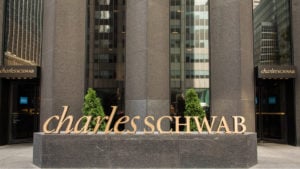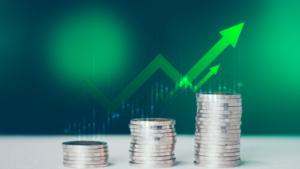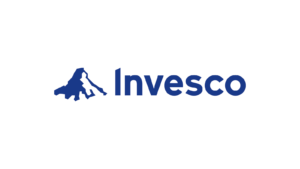The market for funds that combine capital preservation and rich payouts is characterized by a blend of investment strategies focusing on stability and income generation. These funds typically invest in a mix of high-quality bonds, dividend-paying stocks, and other income-producing assets to achieve a balance between preserving principal and providing regular income. This forms the backdrop for my list of the seven top-rated income funds for investors.
To provide a steady stream of income, these funds include assets that generate regular payouts, such as dividend-paying stocks and high-yield bonds. The goal is to offer a higher yield than traditional savings accounts or government bonds.
In uncertain economic times, there is a heightened demand for investment options that offer both security and income. Investors are increasingly seeking funds that can provide stable returns while minimizing risk.
The uncertain political and economic climate in the U.S. could then spur the demand for these funds moving forward. So here are seven top-rated income funds for investors to consider adding to their portfolios.
Vanguard Dividend Growth Fund (VDIGX)

Source: ShutterstockProfessional / Shutterstock.com
Vanguard Dividend Growth Fund (MUTF:VDIGX) focuses on high-quality companies with strong dividend growth, aiming for long-term capital appreciation and reasonable income.
The fund seeks to be diversified across industry sectors. As of July 2, 2024, the fund has assets of $52.10 billion, an expense ratio of 0.29%, and a minimum investment of $3,000. The fund’s dividend yield is 3.35%, with dividend growth of 4.71% and quarterly payout frequency.
VDIGX had a total return of 8.95% in the past year and an average annual return of 4.25% since its inception on May 15, 1992, including dividends. The fund is rated as having average performance and low risk. Its 52-week low and high are $33.42 and $39.36, respectively, with a 5-year beta of 0.73.
Its beta of 0.7 then means it could offer a more certain distribution of outcomes for investors, especially as one nears retirement age, which could prove beneficial for those who seek more certainty in their portfolios. This make it one of those top-rated income funds to consider.
T. Rowe Price Equity Income Fund (PRFDX)

Source: shutterstock.com/ChristianChan
The T. Rowe Price Equity Income Fund (MUTF:PRFDX) invests in a diversified portfolio of income-producing equity securities, providing steady income and potential for capital growth.
PRFDX is a mutual fund that primarily invests at least 80% of its net assets in common stocks, with an emphasis on large-capitalization stocks that have a strong track record of paying dividends or are believed to be undervalued.
The fund has assets of $18.04 billion, an expense ratio of 0.68%, and a minimum investment of $2,500. The fund’s dividend yield is 5.84%, with a dividend growth of -5.16% and quarterly payout frequency. The high yield it’s why I consider to be among the top-rated income funds available for investors. This combination of factors then makes it part of these top-rated income funds.
PRFDX had a total return of 17.49% in the past year and an average annual return of 3.13% since its inception on October 31, 1985, including dividends. The fund is rated as having average performance and average risk. Its 52-week low and high are $30.52 and $36.97, respectively, with a 5-year beta of 0.80.
Fidelity Equity-Income Fund (FEQIX)

Source: Shutterstock
The Fidelity Equity-Income Fund (MUTF:FEQIX) seeks high current income through investments in income-producing equity securities, combined with the potential for capital appreciation.
FEQIX is a mutual fund that normally invests at least 80% of its assets in equity securities, primarily income-producing equity securities, which tends to lead to investments in large-cap “value” stocks.
The fund invests in both domestic and foreign issuers and may potentially invest in other types of equity securities and debt securities, including lower-quality debt securities. The fund has assets of $8.10 billion, an expense ratio of 0.54%, and no minimum investment requirement. The fund’s dividend yield is 4.23%, with dividend growth of 4.35% and quarterly payout frequency.
I like FEQIX because it effectively balances the capital appreciation, dividend yield, and dividend growth all at once, which could be appealing for investors who seek to strike the middle ground between all three of these important moving parts.
Schwab U.S. Dividend Equity ETF (SCHD)

Source: Isabelle OHara / Shutterstock.com
The Schwab U.S. Dividend Equity ETF (NYSEARCA:SCHD) tracks an index focused on high-dividend-yielding U.S. stocks, offering a balance of income and potential for capital growth.
SCHD is an exchange-traded fund that tracks the Dow Jones U.S. Dividend 100 index, which is a market-cap-weighted index of 100 dividend-paying US equities. SCHD has assets of $54.72 billion, an expense ratio of 0.06%, and a PE ratio of 14.69x. The fund’s dividend yield is 3.66%, with a payout ratio of 53.71%.
SCHD had a 1-year return of 6.02%. The fund’s 52-week low and high are $66.67 and $80.82, respectively, with a beta of 0.72. The fund holds 103 stocks, with the top 10 holdings accounting for 39.88% of its assets.
SCHD has earned its reputation as being the “gold standard” for dividend-growth ETFs and could work well in a portfolio as an alternative to ETFs that track the S&P 500 given its impressive total return profile.
iShares Select Dividend ETF (DVY)

Source: C H A L N / Shutterstock.com
The iShares Select Dividend ETF (NASDAQ:DVY) invests in U.S. stocks with high dividend yields and strong dividend growth, aiming for stable income and long-term capital preservation.
DVY is an exchange-traded fund that tracks the DJ US Select Dividend Index, which selects roughly 100 stocks based on dividend yield from a broad market-cap universe. DVY has assets of $18.15 billion, an expense ratio of 0.38%, and a P/E ratio of 13.20x. The fund’s dividend yield is 3.79%, with a payout ratio of 50.07%.
The fund holds 104 stocks, with the top 10 holdings accounting for 19.17% of its assets. The top holdings include Altria (NYSE:MO), AT&T (NYSE:T), and Verizon Communications (NYSE:VZ).
DVY could be a good dividend growth ETF for those who feel unsatisfied with SCHD’s rules-based screening mechanism, instead opting to rank companies by yield alone. DVY could then have higher total income generation potential.
Invesco S&P 500 High Dividend Low Volatility ETF (SPHD)

Source: Shutterstock
The Invesco S&P 500 High Dividend Low Volatility ETF (NYSERCA:SPHD) combines high dividend yield with low volatility, targeting companies that offer strong income potential with reduced risk.
SPHD is an exchange-traded fund that tracks the S&P 500 Low Volatility High Dividend Index, which comprises the least volatile, highest dividend-yielding stocks from the S&P 500. The fund was launched on October 18, 2012, by Invesco (NYSE:INVZ). SPHD has assets of $2.93 billion, an expense ratio of 0.30%, and a price-to-earnings (P/E) ratio of 17.38x.
SPHD has a consistent history of monthly dividend payouts. The fund’s dividend for the trailing twelve months (TTM) is $1.85, with a dividend yield of 4.19%. The fund trades categorized as a Large Value ETF focusing on the North American region.
SPHD with its low-volatility nature might be suitable for those who are at or near retirement. Alternatively, it may also be attractive for people who want to see steady returns in their portfolio over wild swings. This stability comes with the income and capital appreciation potential harvested from its blue-chip holdings.
Vanguard Wellesley Income Fund (VWINX)

Source: Shutterstock
The Vanguard Wellesley Income Fund (MUTF:VWINX) is a mutual fund that invests approximately 60% to 65% of its assets in investment-grade, fixed-income securities, such as corporate, U.S. Treasury, government agency bonds, and mortgage-backed securities. The remaining 35% to 40% of the fund’s assets are invested in common stocks. More specifically, they’re invested in companies with a history of above-average dividends or expectations of increasing dividends.
The fund has assets of $50.36 billion, an expense ratio of 0.23%, and a minimum investment of $3,000. The fund’s dividend yield is 4.96%. VWINX had a total return of 6.76% in the past year and an average annual return of 1.88% since its inception on July 1, 1970, including dividends. The fund is rated as having high performance and below-average risk.
Its 52-week low and high are $23.07 and $25.42, respectively, with a 5-year beta of 0.76. The fund holds 1,449 securities. Thus, it could be a great option for investors who seek a low-volatility option.
On the date of publication, Matthew Farley did not have (either directly or indirectly) any positions in the securities mentioned in this article. The opinions expressed are those of the writer, subject to the InvestorPlace.com Publishing Guidelines.

















